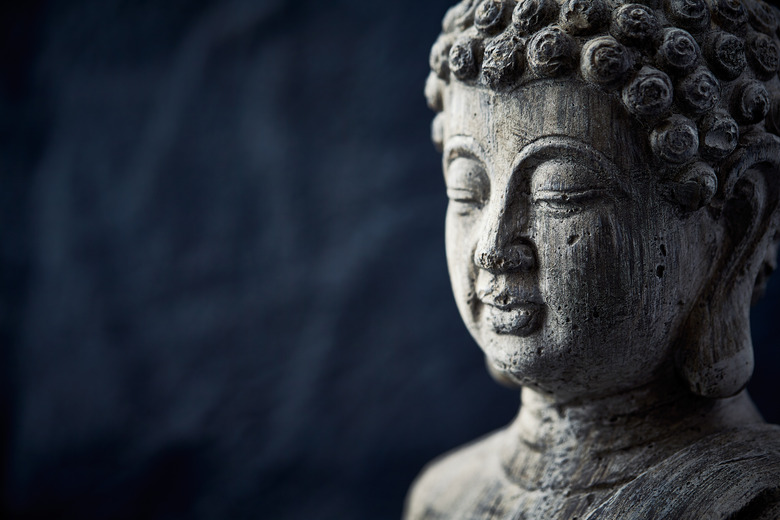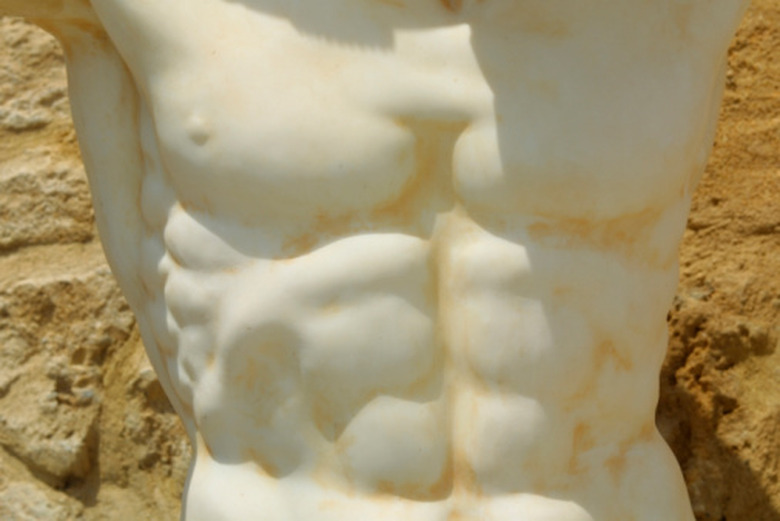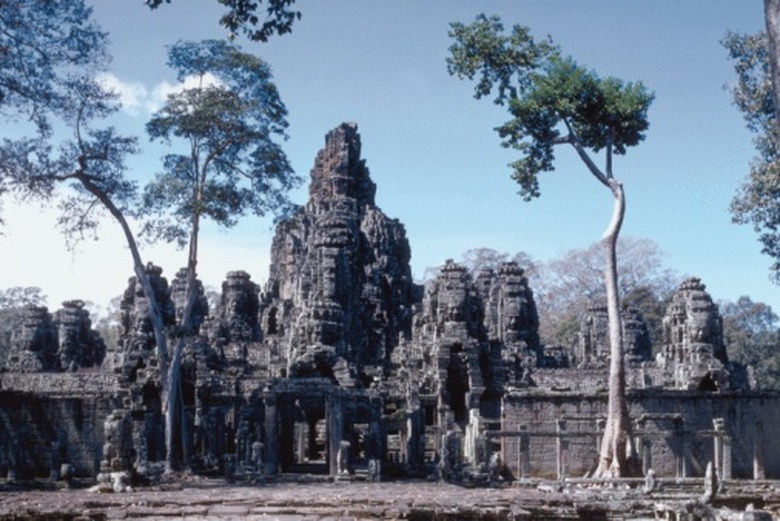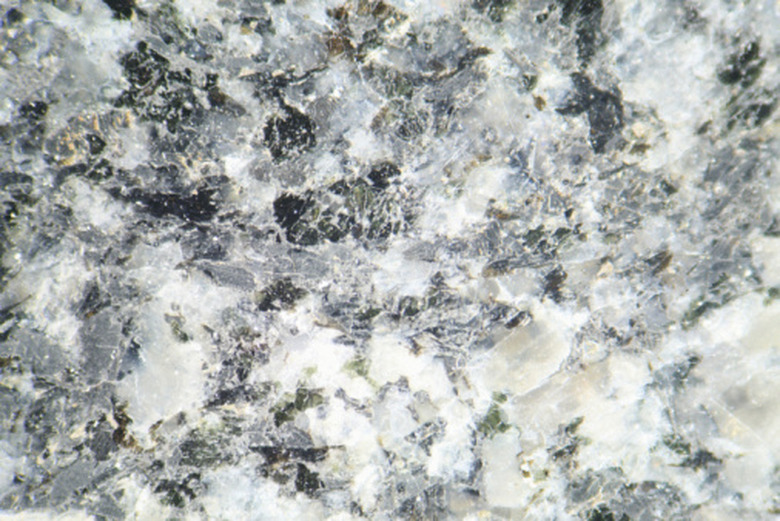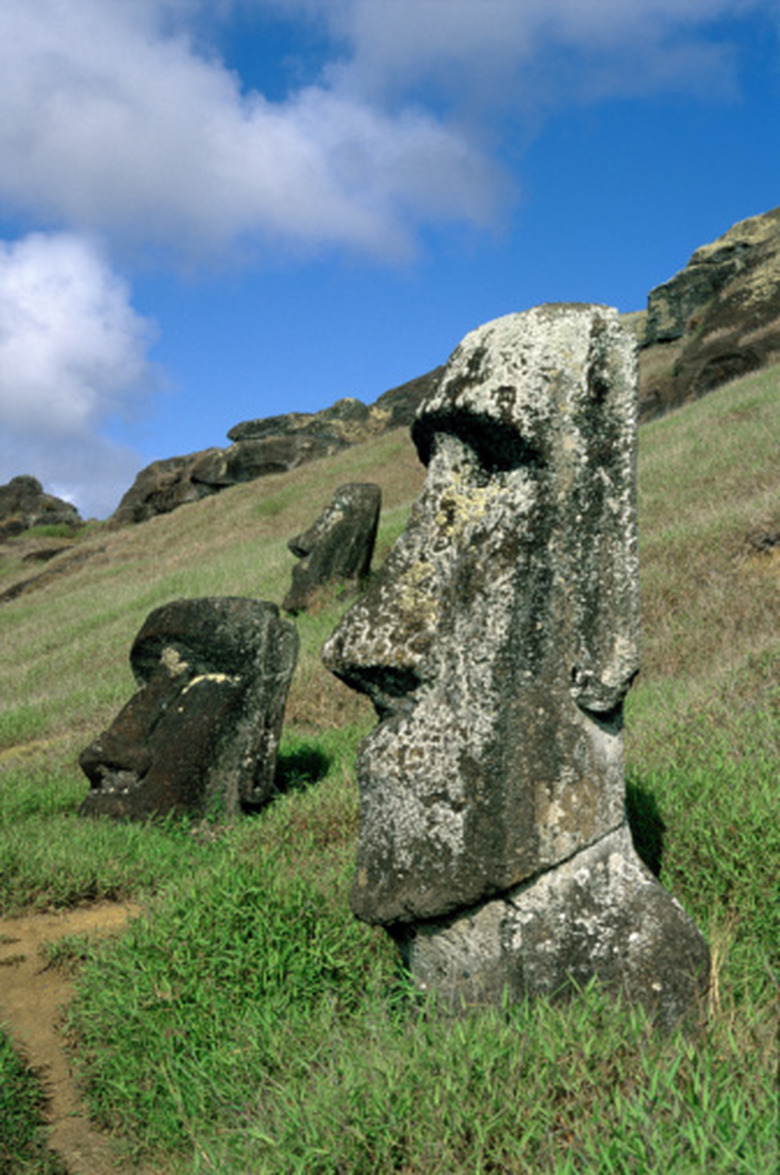What Kind Of Rocks Are Used To Make Statues?
Modern sculptors have access to new materials such as plastic and artificial stone, but ancient artisans worked in natural rock to create works of art. Humans use and used stones such as marble, alabaster, limestone, and granite — to name a few — to create impressive sculptural works. Some materials stand the test of time better than others — marble, for instance, is far more robust and lasting than sandstone. Stone carvings often outlast the cultures that created them, and many enjoy a place of cultural or religious importance. Whether ancient or modern, artists have sought the best rock for their art. The best stone for sculpting is easy to work, resists shattering and contains no apparent crystalline structure.
Marble
Marble
Sculptors have chosen beautiful and durable marble for their finest works of art for thousands of years. The Taj Mahal's carved stone panels, the Elgin Marbles of the Parthenon and Michelangelo's towering statue of David exemplify marble's versatility. Marble carves easily and resists breakage, suiting it well for fine art or decorative sculpture. The metamorphic version of sedimentary limestone and calcite deposits, marble naturally occurs in white, pink, green, gray, brown and black, depending on the other minerals present during its formation. Sculptors frequently choose white marble for representations of the human form because its faint translucency gives the cold stone the appearance of living flesh.
Alabaster
Alabaster
Alabaster refers not to a single type of rock, but to any of a number of minerals that share its characteristic pale color, softness and luminous translucency. Gypsum and calcite represent the majority of ancient alabaster statuary. The minerals are soft enough that the ancient Egyptians' malleable copper tools could easily work them into decorative forms. Sculptors rarely used alabaster for larger pieces, though, as its softness made it prone to damage. Instead, artisans used it mostly for small household objects like cosmetic jars and translucent inlays for windows.
Sandstone
Sandstone
The sedimentary rock sandstone carves so readily that even wind erosion works it into fantastic shapes. Early carvers and stonemasons found that making sandstone building blocks and carving them into bas-reliefs allowed them to build towering structures covered with sculpted forms. The temple complex at Angkor Wat consists of carved sandstone. Sculpting in sandstone requires little effort, and produces finely detailed results, but it is not particularly durable.
Limestone
Limestone
Although this progenitor to marble is softer than its metamorphic relative, limestone shares its characteristic lack of crystalline structure and wide array of natural hues. One of the oldest limestone statues is the 5,000-year-old Guennol Lioness, but modern sculptors are producing new limestone statuary daily. Easily carved and able to withstand sharp blows without fracturing, limestone rock allows artists the freedom to create elegant curves and crisp lines.
Granite
Granite
Granite is an igneous rock with a variegated texture, but no overall crystalline structure. Heavy and difficult to work, granite makes a durable basis for statuary that ancient sculptors used for important religious, political and funerary statues. Granite's natural range of hues include grays, greens, reds, and blacks with an emphasis on darker colors. Ancient artisans used dark granite for dark figures such as the Egyptian goddess of destruction, Sekhmet. Modern sculptors find that its range of somber colors suits the heavy stone to funeral statuary and gravestone carving.
Basalt
Basalt
Like granite, basalt is an igneous rock. Unlike granite, basalt's smooth grain is uniformly dark and typically without visible crystals. Artisans can polish the black, heavy stone to a satiny shine, as Egyptian sculptors did in their carvings of gods, goddesses, and pharaohs. Other artists choose to leave the stone matte black and raw, as the sculptors of the few basalt moai on Easter Island did.
References
- Art Museum Journal; The Guennol Lioness; Stan Parchin; July 4, 2009
- City University of New York; Tennessee Marble; Wayne G. Powell; 2005
- Easter Island: Giant Stone Statues Tell of a Rich and Tragic Past (p. 26); Caroline Arnold; Clarion Books; 2000
- Geological Survey of Norway: Granite quarry survey in the Aswan region, Egypt: shedding new light on ancient quarrying
- The State Hermitage Museum: Statue of the Goddess Sekhmet-Mut
- The Khan Academy: Easter Island Moai
- Encyclopedia Britannica: Basalt
- University of Aukland: Limestone
- U.S. Geological Survey: How do you recognize limestone and marble?
- Metropolitan Museum of Art: From Quarry to Sculpture: Understanding Provenance, Typologies, and Uses of Khmer Stones
- Oxford University: More about alabaster and travertine
- The J. Paul Getty Museum: About Sculpture in Western Art
- The Victoria and Albert Museum:Sculpture Techniques
- Encyclopedia Britannica: Sculpture Materials
Cite This Article
MLA
Whitney, Lauren. "What Kind Of Rocks Are Used To Make Statues?" sciencing.com, https://www.sciencing.com/kind-rocks-used-make-statues-8354285/. 20 April 2018.
APA
Whitney, Lauren. (2018, April 20). What Kind Of Rocks Are Used To Make Statues?. sciencing.com. Retrieved from https://www.sciencing.com/kind-rocks-used-make-statues-8354285/
Chicago
Whitney, Lauren. What Kind Of Rocks Are Used To Make Statues? last modified March 24, 2022. https://www.sciencing.com/kind-rocks-used-make-statues-8354285/
